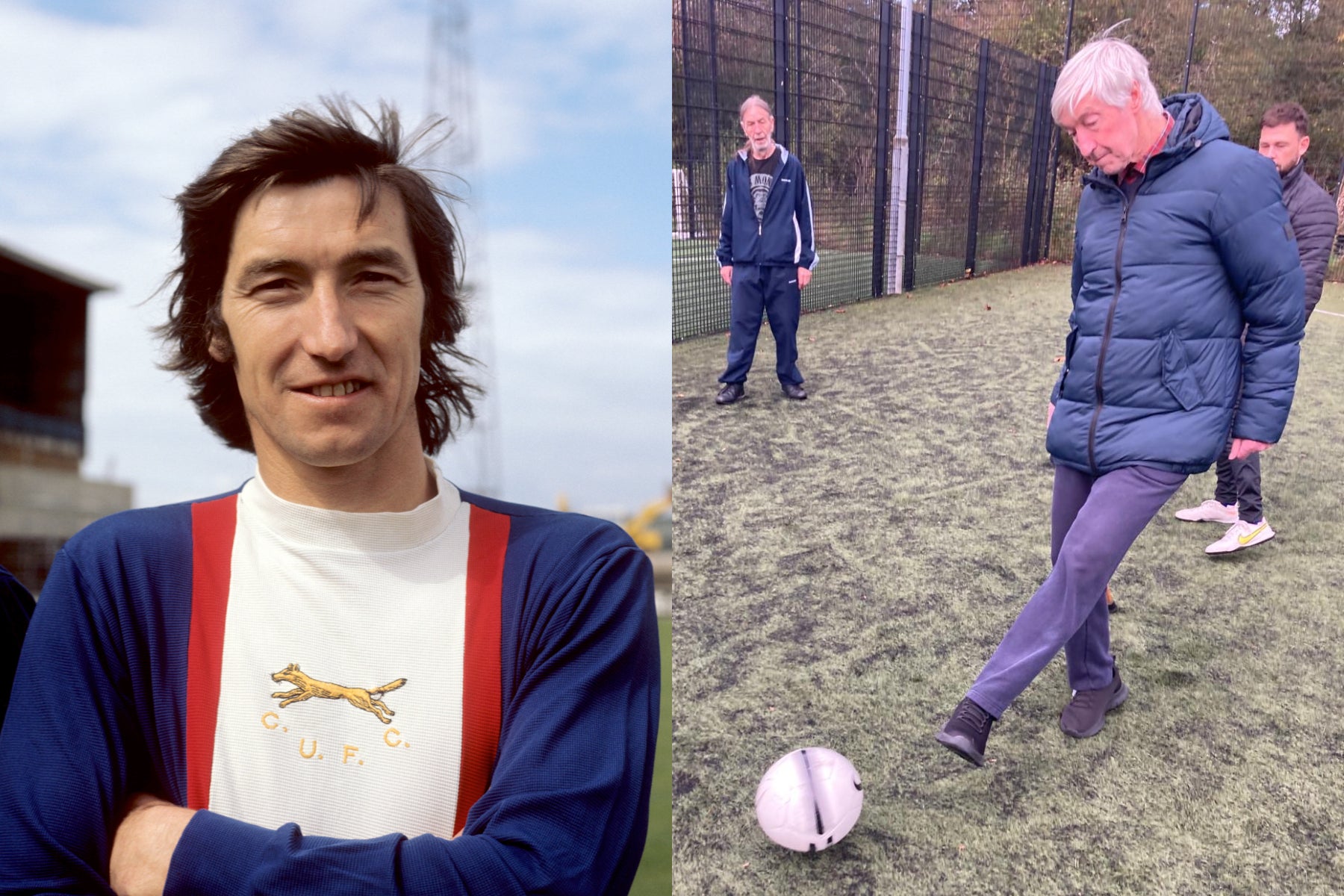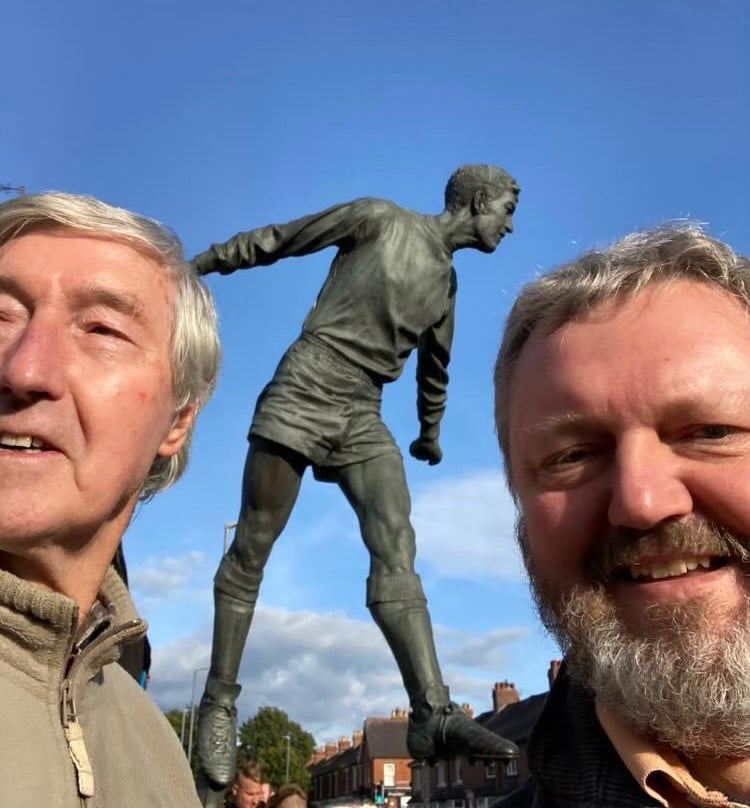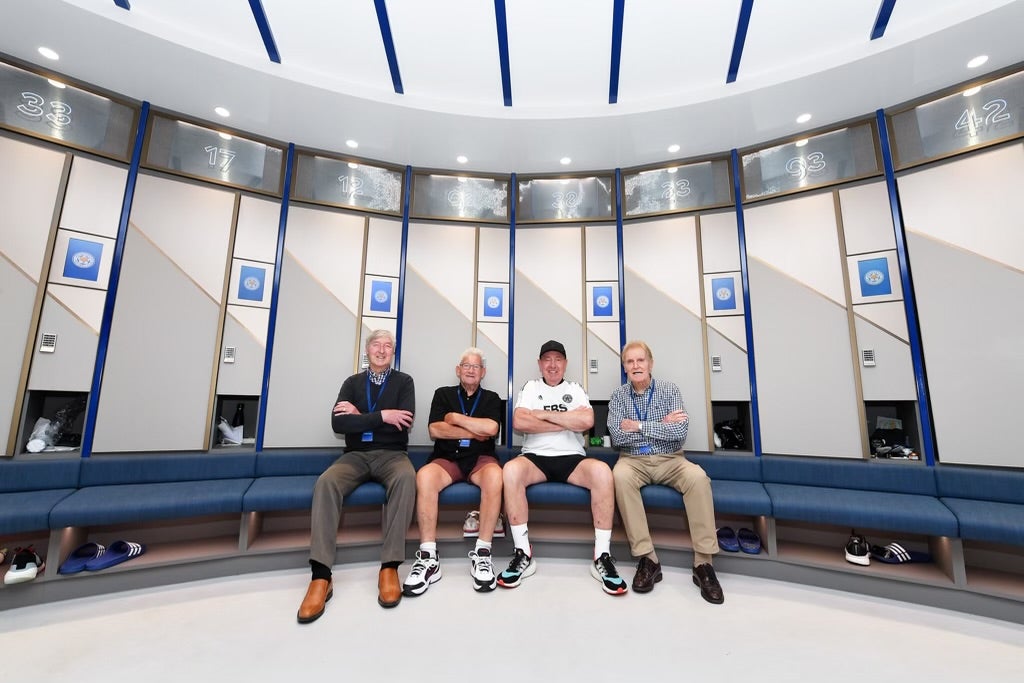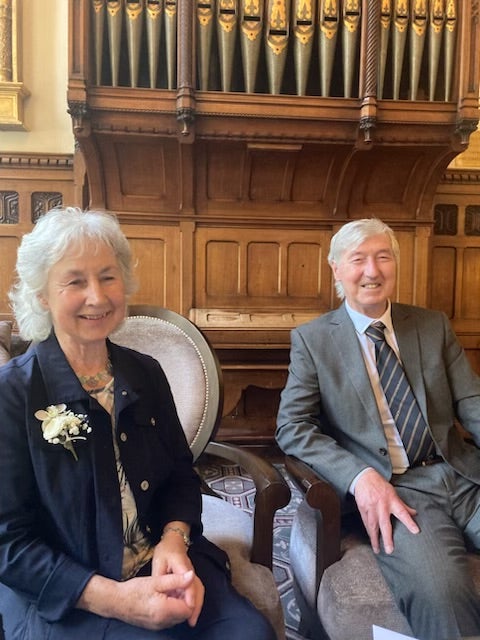Footballer famous for headers now battles Alzheimer’s ‘caused by scoring goals’
Hugh McIlmoyle was so famous for scoring headers there is a statue of him scoring one outside Carlisle stadium

An ex-professional footballer, who went from working in a shipyard to playing in the 1961 FA Cup Final before going on to score 250 career goals, is battling Alzheimer’s which research suggests may have been caused by his career.
Hugh McIlmoyle, from Port Glasgow, played during the 1960s and 70s for a number of teams including Leicester City, Rotherham United, Carlisle United, Wolverhampton Wanderers, Bristol City, Middlesbrough, and Preston North End.
“Known for heading the ball” and “loved by wingers”, Hugh, 84, still holds the Carlisle club record for scoring 44 goals in a single season and there is now a statue of him scoring a header outside the stadium.
But years of playing professional football may have taken a toll on Hugh, who was diagnosed with Alzheimer’s disease in 2018, the most common cause of dementia, and now lives in a care home in Huncote, Leicestershire, just around the corner from his 80-year-old wife Rosalyne.
Ex-professional players were found to be three-and-a-half times more likely to be diagnosed with Alzheimer’s than the general population, according to a 2023 study conducted by the University of Nottingham, commissioned by the Football Association (FA) and Professional Footballers’ Association (PFA).
“That’s what he was famous for, heading the ball and that’s why there probably is a link to his Alzheimer’s, truth be told,” his son Alan, 61, a retired construction plant fitter said.

But Hugh, whose professional career spanned from 1960 to 1976, has not let the degenerative disease extinguish his love of football after he joined a Dementia Friendly Walking Football team at the Huncote Leisure Centre, where he plays for 45 minutes every week.
The sessions involve gentle warm-up exercises followed by football-related games at walking pace, and while Hugh has lost his skills, he still manages to have a crack at scoring.
“We’re doing our best to keep him going,” Rosalyne said.
“Obviously it’s still heart-breaking.”
“There’s a danger with this disease that people can just end up not doing anything but that’ll just speed up the progression,” Alan added.
Hugh said the best players he faced were Sir Bobby Charlton and George Best but that the 1961 Tottenham Hotspur squad was the strongest team he played against.
Growing up in Port Glasgow, Scotland, Hugh did not foresee a successful career as a professional football player.
After finishing school, he spent three years working a “regular job” in the shipyards, which he expected would “be his life”.
But in 1959, Hugh, who played for the local amateur football team Port Glasgow at the time, was scouted by Leicester City.
Two years later, he was playing for the Foxes in the FA Cup Final against league champions Tottenham Hotspur at Wembley Stadium, a game which they lost 2-0.
“Dad was a popular player with wingers because they knew that if they got it in the box, dad would knock it in,” said Alan.
In 1962, he joined Carlisle United and scored 44 goals in one season, a club record which stands to this day.
To honour this achievement, the club erected a statue of Hugh outside the stadium, which his son said bears a “close resemblance”.

He then went on to play for Wolverhampton Wonderers and Bristol City before returning to Carlisle in 1967.
The club eventually sold Hugh to Middlesbrough for £55,000 in 1969, equivalent to £909,200 today, which was the second highest transfer fee that season.
Hugh went back to play for his local childhood team, Greenock Morton, before retiring in 1976, having made a total of 582 club domestic league appearances and scored 250 goals.
Alan recalled how his father often commented that football was much rougher in his day and that players now fall over too easily.
In the summer of 2022, Hugh visited Leicester City’s new training ground with his former teammates Howard Riley and Richie Norman, and accompanied by club ambassador Alan Birchenall.
Hugh was diagnosed with Alzheimer’s in 2018 and moved to Leicestershire in the summer of 2021 so he could be closer to his family.
The disease could be linked to Hugh’s years of heading footballs into the back of the net, although the causes are not yet fully understood.

Earlier research, investigating fears that heading the ball could be linked to brain injuries, conducted by Glasgow University in 2019, found former professional footballers were three-and-a-half times more likely to die of dementia.
“When he was first diagnosed, he understood what it meant and I remember him saying, there’s something wrong with my brain,” said Alan.
“Now we still have good days and we try and take dad out as much as possible.”
Five members of England’s 1966 World Cup-winning team died whilst battling Alzheimer’s disease, including Ray Wilson, Martin Peters, Jack Charlton, Nobby Stiles and Sir Bobby Charlton.
“My dad was known for scoring headers,” said Alan.
“Supporters used to say that he had the ability to hang in the air for that extra second.”
Rosalyne added that Hugh would have been heading a leather ball that was often wet and, in the early days, held together with lace.
“How could you not know that would do damage?” she said.
“Nowadays they’ve realised that the amount of impacts can have a long-term effect,” added Alan.
“And they are putting a lot of work into investigating these long-term effects.”
At first the disease did not stop Hugh from going to watch his old team play but it has progressively got worse and he has stopped going to matches.
“He was going to the matches as the disease developed and still fully appreciated it, but you had to just be a little bit more aware,” said Alan.
“He enjoyed seeing everybody before the match and having a bit of a talk.
“Obviously over time the talks became less and less.”
Despite the disease Hugh still enjoys a number of activities with the support of his family, including dementia friendly football at the Huncote Leisure Centre.
His family hope Hugh’s experience of playing Dementia Friendly Walking Football will help inspire people with Alzheimer’s to research activities in their local area.
Alan said support groups, including the Sapcote Memory Hub and the Leicester Musical Memory Box, have proved invaluable to improving his father’s quality of life.
The Alzheimer’s Society offers support to people through the hardest, most frightening times. Visit alzheimers.org.uk or phone the Dementia Support Line on 0333 150 3456.
Join our commenting forum
Join thought-provoking conversations, follow other Independent readers and see their replies
3Comments